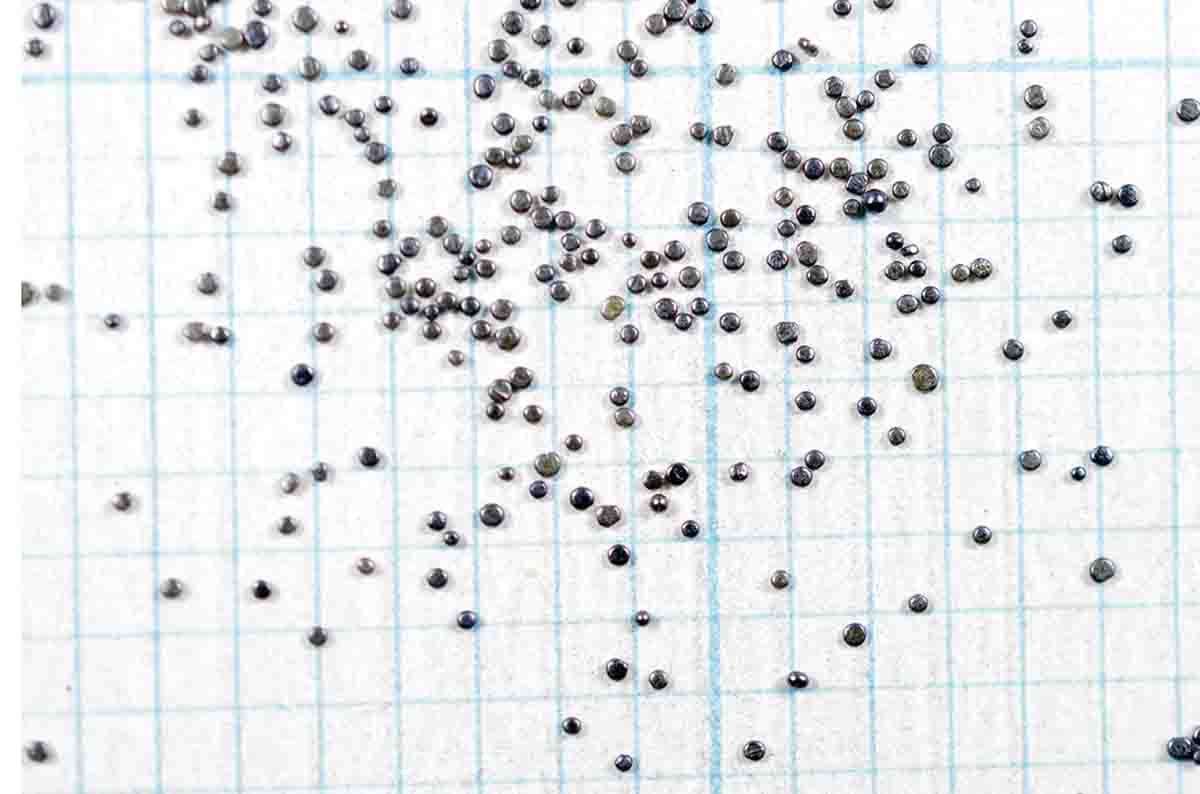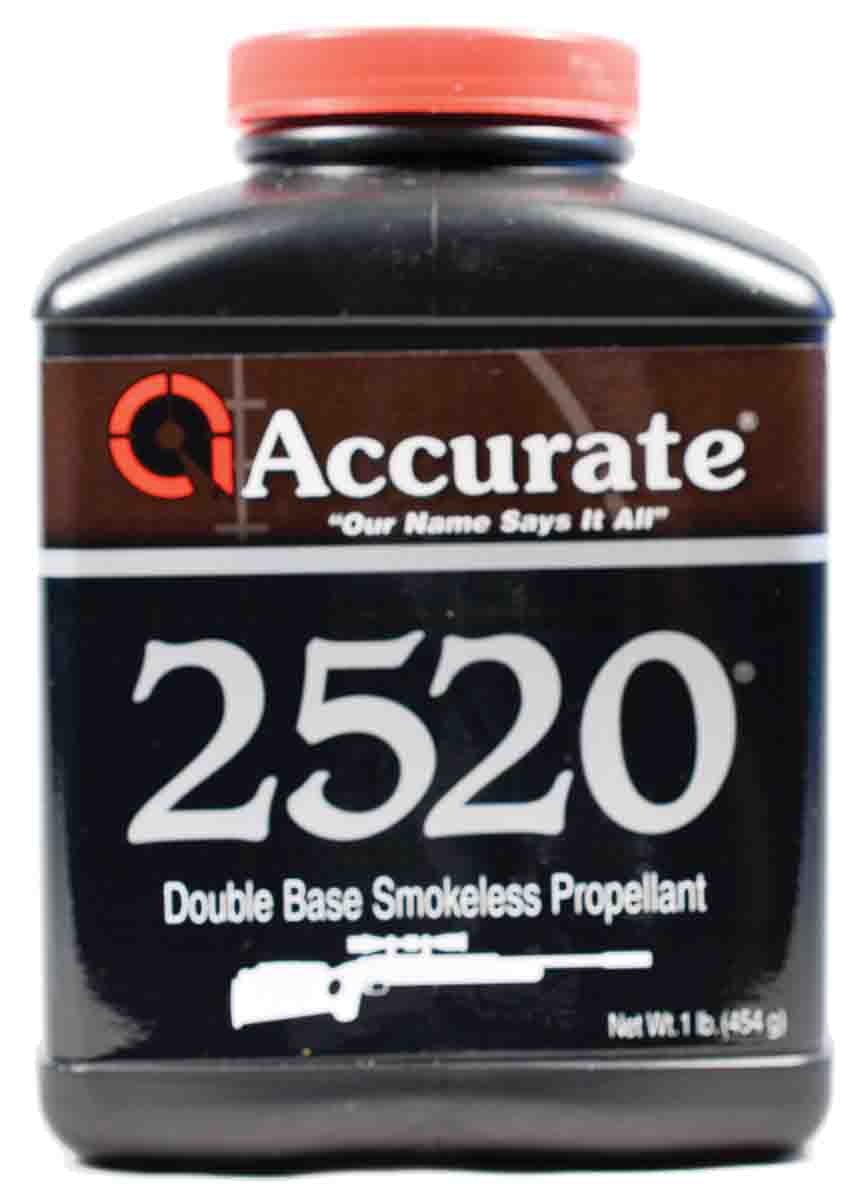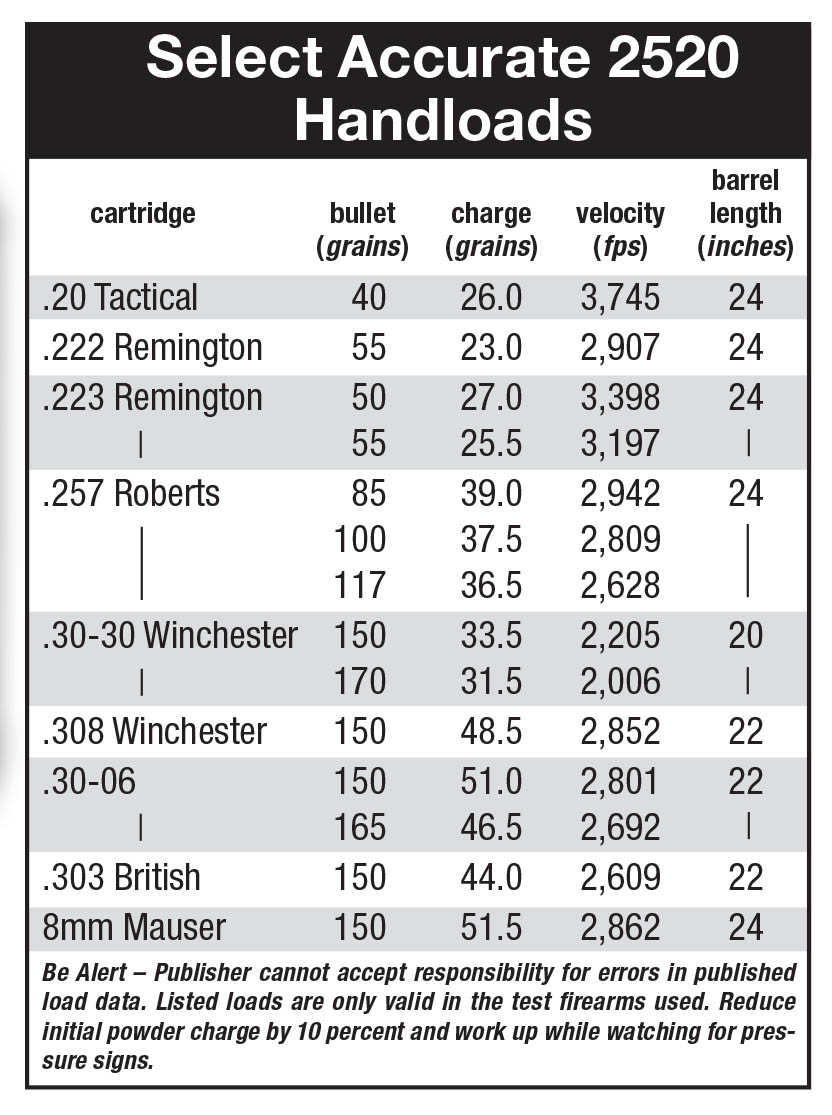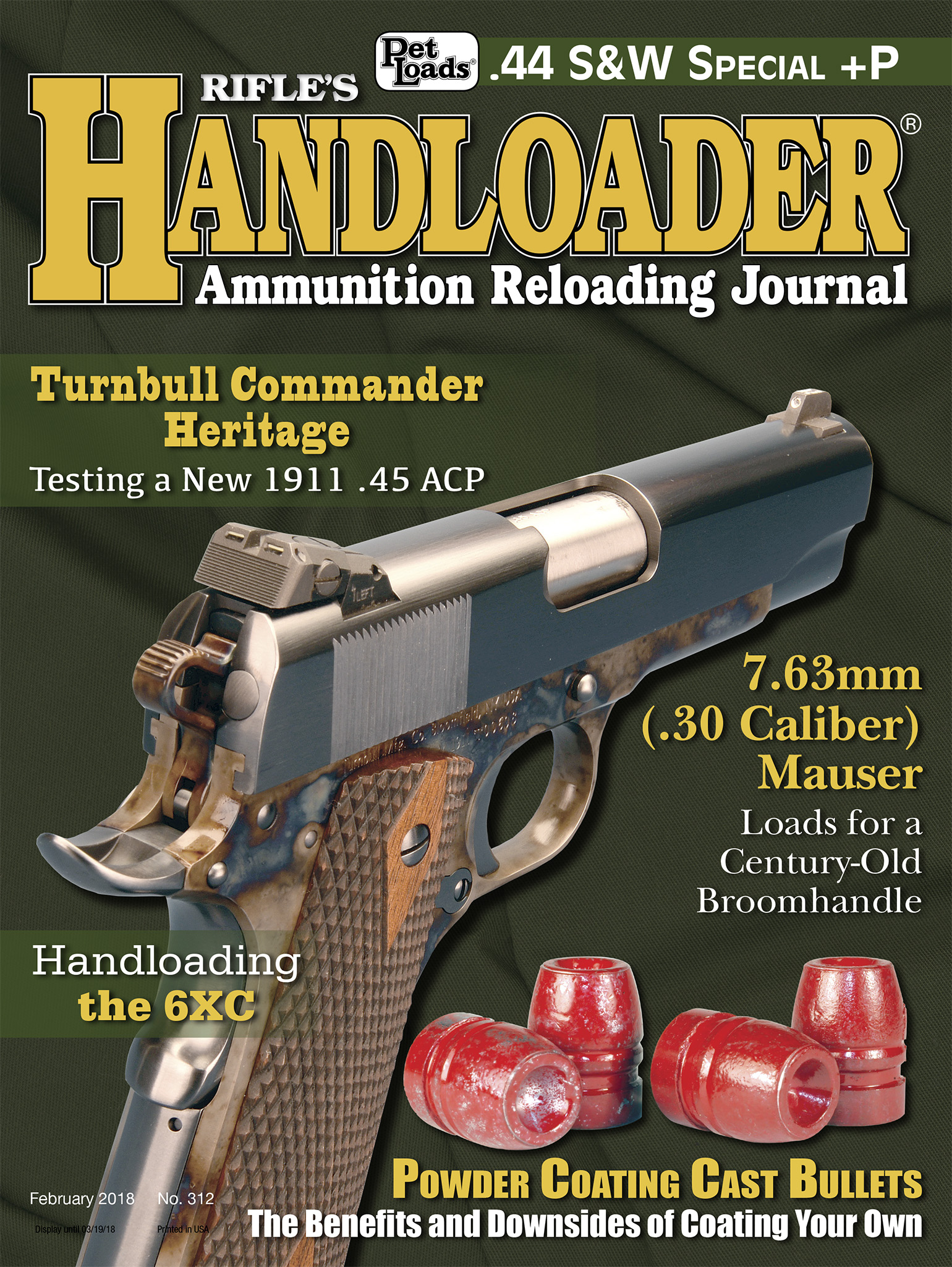Propellant Profiles
Accurate 2520
column By: R.H. VanDenburg, Jr. | February, 18
A few columns ago it was noted that Western Powders, of Miles City, Montana, had continued its move to bring the manufacture of its Accurate line of smokeless powders closer to home. All imported powders were previously manufactured in Israel or in several European countries, with a few exceptions. First the extruded rifle powders were moved to the General Dynamics plant in Ontario, Canada, where IMR powders are manufactured. Then Accurate handgun powders were brought home to the St. Marks Powders facility in St. Marks, Florida. Finally, the manufacture of the remaining spherical rifle powders was also moved to St. Marks.
These last rifle powders included Accurate 2230, 2460 and 2520. That previous column had as its subject the newly

Accurate 2520 is a double-base, spherical powder with a nitroglycerin content of 10 percent. Its granules are small and round, measuring a scant .022 inch in diameter. Bulk density is stated as .970 g/cc. In burn rate charts, such as that found in the Hodgdon 2017 Annual Manual, A-2520 is lumped in with the rather crowded A-4895/4064 group with IMR-4064, Norma 202 and A-4064 on the fast side, and Reloder 15, Vihtavuori N140 and Varget on the slower.
Accurate 2520 probably is best known for its pairing with the .308 Winchester cartridge, particularly in the M14 and AR-10. Here it has earned the sobriquet “Camp Perry powder.” It is well deserved. However, it is much more than that. A perusal of Western Powders’ Reloading & Load Data Guide, Edition 6.0 turned up 42 cartridges for which it is suited, from the .17 Remington Fireball to the .500 S&W Magnum. The Hornady Handbook of Cartridge Reloading, 10th Edition included many of the same cartridges but also included seven more not found in the former manual. All in all, it is a quite useful powder.

Testing of the new lot began with the .22 Tactical cartridge and a Berger 40-grain bullet; likewise in the .222 Remington with a Sierra 55-grain bullet. In both cases I was very pleased with small groups and acceptable velocities. In the .223 Remington, both Hornady 50-grain and Sierra 55-grain bullets were shot. As expected, performance left nothing to be desired. In each case, A-2520 produced top, or nearly top, velocities with excellent groups.
Next was the .257 Roberts. Western, in its manual, does not list A-2520 with the cartridge but does so with the .257 Roberts +P. Hornady does not differentiate but notes that its .257 Roberts data was developed at +P pressures. It omits A-2520 as a suitable powder altogether. Nosler’s Reloading Guide 8 pairs A-2520 with 85- and 100-grain bullets, but neither comes close to reaching the maximum velocities attained by slower powders. With all this in mind, I loaded A-2520 with a Nosler 85-grain Ballistic Tip, a Hornady 100-grain SP and a Hornady 117-grain SST. My .257 is pretty accurate and provided three-shot groups of .93, .68 and .23 inch. The rifle is throated for heavier bullets and the groups reflect that.
In the .30-30 Winchester, my Model 94 carbine with its 20-inch barrel loses velocity to Western’s published data for a 24-inch barrel, but Speer 150- and 170-grain bullets performed well.
The .308 Winchester is A-2520’s spiritual home. My 22-inch barrel gave up some speed to published 24-inch data, but accuracy was first rate. In the .30-06, again with a 22-inch barrel, I topped off A-2520 powder charges with Hornady 150- and 165-grain Spire Points. Accuracy was what I’ve come to expect from that rifle and those bullets. None of the manuals call for magnum primers in the ’06 for any powder, but I suspect at this case capacity and above it would be a better choice, especially in cold weather. Unfortunately, I didn’t get to try it this time but will in the future.

The .303 British was quite a puzzle. Both Western and Hornady list the cartridge with Hornady 150-grain SPs and Accurate 2520. Western Powders’ maximum is 46.0 grains for 2,769 fps from a 24-inch barrel. Hornady data lists 41.1 grains as maximum for 2,600 fps from an Enfield No. 4 Mk II 25.25-inch barrel. Both used Winchester Large Rifle primers. I have two .303s; one an Enfield No. 4 Mk I and the other a Ruger No. 1. The Ruger was for the tests. It has a 22-inch barrel. I could use the Western data safely, but cutting the maximum charge by 2 grains gave me longer case life.
The final cartridge was the 8mm Mauser. The situation repeated itself. Western used a 24-inch test barrel; Hornady used a Mauser ’98 with a 24-inch barrel. Western’s maximum charge with a Sierra 150-grain spitzer was 52.5 grains for 2,955 fps. Hornady listed its 150-grain bullet over 49.7 grains at 2,800 fps. Once again, I have two rifles, one a WWII-era Mauser ’98 and the other a Remington Model 700 Classic. I used the latter for the tests. The Western data worked perfectly in the Remington, but I would probably use the Hornady data in the Mauser. Accurate 2520 performed quite well in the cartridge. I’ve shot a lot of these bullets with a range of powders and taken several head of game. Accurate 2520 seems right at home.
Interestingly, A-2520 seemed to give its best performance in such cartridges as the various .338s and .358s, including the .338 Marlin Express, the .338 Ruger Compact Magnum, the .358 Winchester and .35 Whelen.
Regardless, its good to see the Accurate line now home, or close to it. Distribution, availability and lot-to-lot consistency can only benefit.


